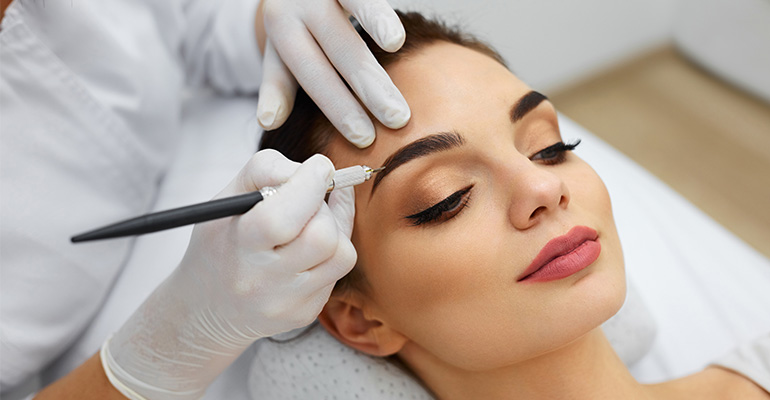Our advanced spider vein laser treatment will erase those unwanted spider veins on your legs, body and face!
We offer facial spider vein removal treatment which is very popular and so much more convenient than spending time and effort masking facial veins with makeup every day.
This page will give you all the information you need about spider veins, including what they are, how they form, and how Star Medispa can banish them safely and quickly.
What Causes Spider Veins?
Veins transport deoxygenated blood back to the heart. In the legs, the superficial veins (veins just below the skin’s surface) collect blood which is then delivered to other, deeper veins within the calf muscle. The normal functioning of the calf muscle helps to pump blood back to the heart, against the force of gravity. Valves inside the veins stop the blood from travelling back down the leg.
However, if the valves become weak and can’t close properly, blood collects in the superficial veins. As time goes by, these veins become ‘varicose’ – they distend (swell) with blood. Varicose veins are characterised by a twisted, knobbly and bluish-purple appearance, and can be painful.
Spider veins
Spider veins are like varicose veins – they form in the same way – but they are smaller and closer to the skin’s surface. Most of the time, spider veins don’t pose a health risk, except for rare cases when they are associated with:
the formation of ulcers as a result of the vein not draining properly
bleeding of the thin, easily injured skin over the spider vein
formation of blood clots in the vein (thrombosis)
vein inflammation, called phlebitis, caused by clotted blood in the vein.
Spider veins are usually blue or red, and sometimes have an appearance similar to a tree branch or spider web – this is why their common name is spider veins. The most common places they occur on the body are the face and legs. Spider veins may affect a large or small area of skin.
The diagram on the right shows the difference in appearance between spider veins and varicose veins:
How Does Laser Spider Vein Removal Work?
The laser energy from our Dynamis Long Pulse Nd:YAG or Diolite KTP laser is absorbed by the pigment in the blood (oxyhemoglobin) contained within the spider veins. As the energy is absorbed, the area of skin above and around the spider veins will become temporarily white in colour. After a few minutes, the spider veins won’t be visible anymore, which indicates the desired effect has been achieved. This makes the process very controlled and safe. Selective Photothermolysis is the name of the method used for spider vein removal. This process is the conversion of light energy to heat energy, with the heat affecting the target spider veins but not damaging the tissue surrounding them. This selective heating up of the spider veins causes them to disintegrate and shrink, allowing them to be absorbed safely into the body.
What The Spider Vein Removal Process?
Initial Consultation:
You’ll have an initial complimentary consultation with one of our experienced practitioners, who will look at your spider veins and explain how laser spider vein removal works, the number of treatments you’ll require. After the consultation, you can either go ahead with the treatment right away or book in for another time.
During treatment:
For the treatment, you’ll lie on your back or stomach, depending on where your unwanted spider veins are located, on a comfortable table in a private room while your dedicated practitioner performs the treatment by passing the laser beam over the affected spider veins.
After spider vein removal:
There is no recovery period needed after spider vein laser treatment. You walk in right before this treatment and walk straight out the door after it finishes – it’s as easy as that.
The skin on the treated area can be a little red and irritated or there may be no adverse reaction to the treatment at all. Because everyone is different and their body responds differently the after affects vary from person to person.
We will explain everything to you in detail at your initial consultation.




